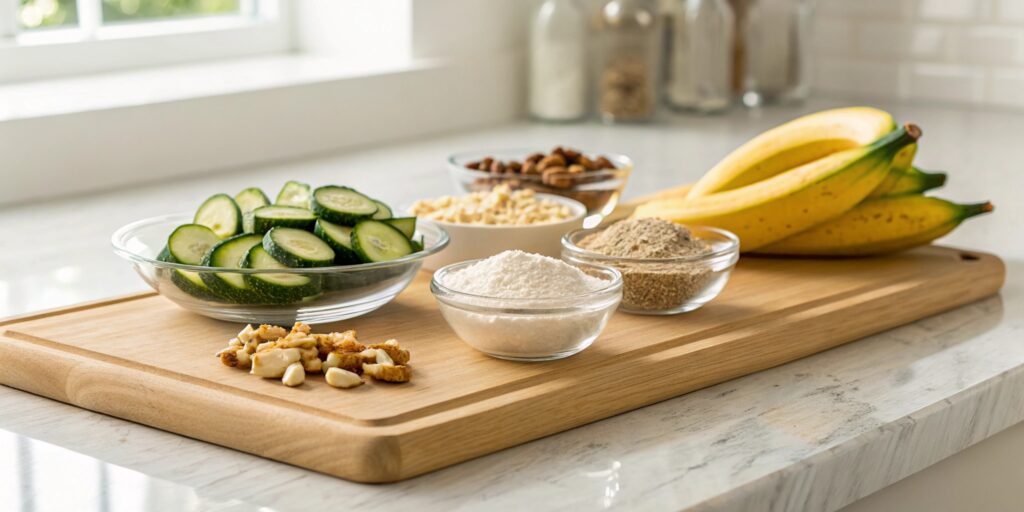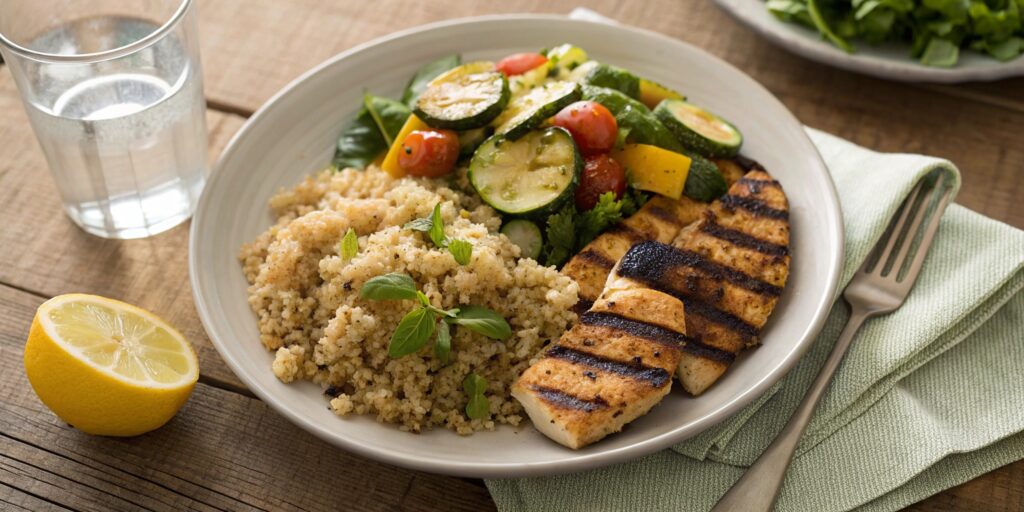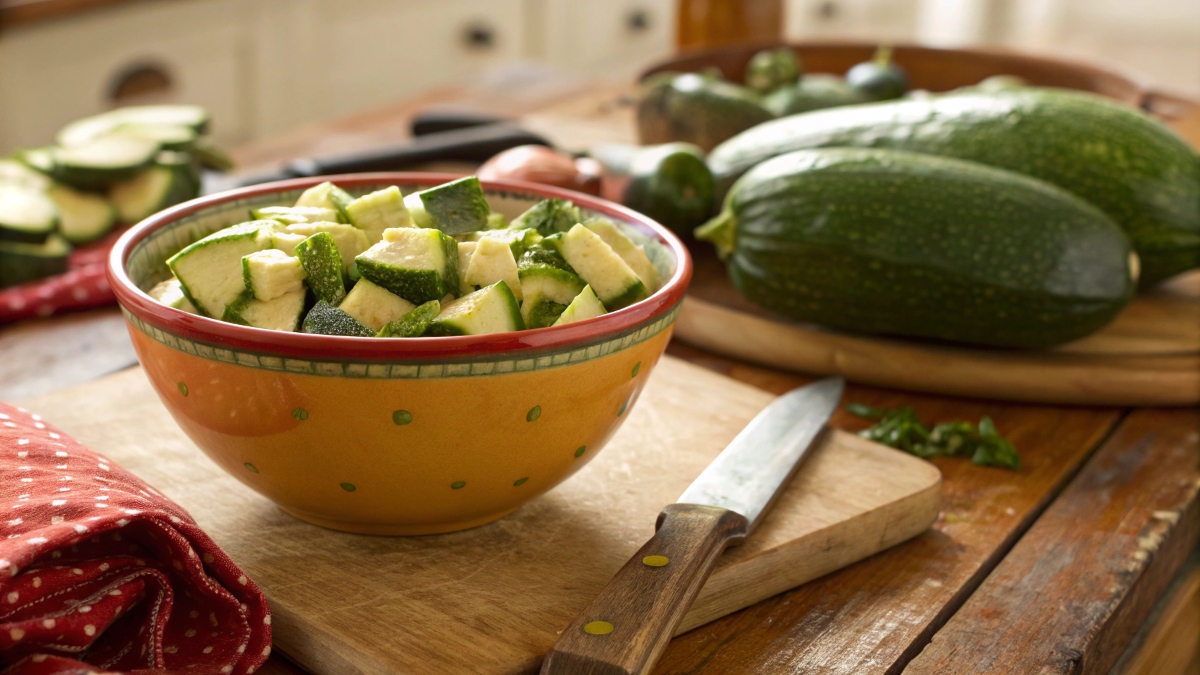What Are Calabacitas?
Calabacitas, meaning “little squashes” in Spanish, refer to a variety of summer squash commonly used in Mexican cuisine. They are closely related to zucchini but have a slightly **sweeter flavor and firmer texture**. Many people wonder about its health benefits. The answer is a resounding YES! These nutrient-packed vegetables offer numerous advantages, making them a fantastic addition to any diet.
Calabacitas are a staple in many **Latin American dishes**, thanks to their **low calorie, high fiber, and vitamin-rich** profile. If you’re curious about the difference between calabacitas and zucchini, check out our **detailed comparison here**.
Nutritional Value of Calabacitas

Calabacitas are packed with **essential vitamins, minerals, and antioxidants**, while being incredibly **low in calories**. This makes them a great choice for weight management and overall well-being.
Caloric Content and Macronutrients
| Nutrient | Per 100g Serving |
|---|---|
| Calories | 17 kcal |
| Carbohydrates | 3.1g |
| Protein | 1.2g |
| Fat | 0.3g |
| Fiber | 1g |
As seen above, **calabacitas are low in calories and fat**, making them an ideal food for those looking to **lose weight or maintain a balanced diet**.
Vitamins & Minerals in Calabacitas
In addition to macronutrients, calabacitas are rich in essential vitamins and minerals:
- Vitamin C: Supports the immune system and promotes healthy skin.
- Vitamin A: Essential for **good vision and cell growth**.
- Potassium: Helps **regulate blood pressure and maintain fluid balance**.
- Magnesium: Supports **muscle and nerve function**.
- Antioxidants: Help **reduce inflammation and oxidative stress**.
Health Benefits of Calabacitas
Regularly including calabacitas in your diet can provide multiple **health benefits**. Here’s why they are considered a **superfood**:
Supports Digestive Health
Rich in **fiber**, calabacitas aid digestion by promoting **gut health** and preventing **constipation**. The fiber content also helps keep you **full longer**, reducing unnecessary snacking.
Heart Health Benefits
The combination of **fiber, potassium, and antioxidants** in calabacitas helps maintain a **healthy heart** by lowering **bad cholesterol (LDL)** and improving blood circulation.
Calabacitas for Weight Loss
Due to their **low calorie and high fiber** content, calabacitas keep you full for longer without adding excess calories. This makes them an excellent **weight-loss-friendly vegetable**.
Boosts Immunity
Vitamin C in calabacitas enhances **immune function** by stimulating the production of white blood cells. This helps the body fight **infections and recover faster** from illnesses.
How to Cook and Enjoy Calabacitas
Now that you know **why calabacitas are healthy**, it’s time to learn how to cook them! From **traditional Mexican dishes** to modern fusion recipes, calabacitas can be prepared in multiple ways. Check out our best calabacitas recipes here! 🍽️
How to Incorporate Calabacitas into Your Diet
Calabacitas are incredibly **versatile** and can be used in a variety of dishes. Whether roasted, sautéed, or even eaten raw, they provide a mild, slightly sweet flavor that pairs well with many ingredients. If you’re looking for **ways to prepare calabacitas**, here are some of the best cooking methods to try.
Best Ways to Cook Calabacitas
Cooking enhances the **flavor and texture** of calabacitas while retaining their nutrients. Here are some of the best ways to prepare them:
- Roasting: Slice calabacitas, toss them in olive oil, season with salt and pepper, and roast at 400°F (200°C) for 20 minutes.
- Sautéing: Cook diced calabacitas in a pan with garlic, onions, and a touch of olive oil for a quick, flavorful side dish.
- Steaming: Preserve the nutrients by steaming calabacitas for 5-7 minutes until tender.
- Grilling: Slice lengthwise, brush with olive oil, and grill for a smoky taste.
- Blending into Soups: Add to soups and stews for a creamy texture without adding excess calories.
Can You Eat Calabacitas Raw?
Yes! Raw calabacitas are safe to eat and add a crunchy, refreshing bite to salads. You can also spiralize them into **zoodles** (zucchini noodles) as a low-carb pasta alternative.
Calabacitas vs. Zucchini: What’s the Difference?
Many people confuse calabacitas with zucchini, but they have subtle differences. If you’re curious, check out our comparison guide here.
Delicious Calabacitas Recipe Ideas
Ready to cook? Try these **nutritious and delicious** calabacitas recipes! 🥒🍽️
Traditional Mexican Calabacitas Recipe
This classic dish is a Mexican staple, featuring sautéed calabacitas with corn, tomatoes, and cheese.
Ingredients:
- 2 cups chopped calabacitas
- 1 cup corn kernels
- 1 diced tomato
- ½ chopped onion
- 1 clove garlic, minced
- ½ cup shredded cheese (optional)
- 1 tbsp olive oil
- Salt and pepper to taste
Instructions:
- Heat olive oil in a pan over medium heat.
- Sauté onions and garlic until fragrant.
- Add calabacitas, corn, and tomatoes. Cook for 5-7 minutes.
- Season with salt and pepper.
- Top with cheese and serve warm!
Low-Calorie Calabacitas Stir-Fry
For a light, healthy meal, try this quick stir-fry packed with nutrients.
Ingredients:
- 2 cups sliced calabacitas
- ½ cup sliced bell peppers
- 1 tbsp soy sauce
- 1 tbsp sesame oil
- 1 clove garlic, minced
- 1 tsp red pepper flakes (optional)
Instructions:
- Heat sesame oil in a pan.
- Add garlic and cook until golden.
- Toss in calabacitas and bell peppers. Stir-fry for 5 minutes.
- Drizzle with soy sauce and red pepper flakes.
- Serve hot with rice or quinoa.
Roasted Calabacitas with Herbs
Perfect as a side dish or snack, roasted calabacitas are crispy on the outside and tender inside.
Ingredients:
- 3 calabacitas, sliced
- 2 tbsp olive oil
- 1 tsp dried oregano
- 1 tsp garlic powder
- ½ tsp salt
- ½ tsp black pepper
Instructions:
- Preheat oven to 400°F (200°C).
- Mix calabacitas with olive oil and seasonings.
- Spread on a baking sheet and roast for 20 minutes.
- Serve warm with fresh herbs on top.
Stuffed Calabacitas for a Protein-Packed Meal
This high-protein dish is great for meal prep!
Ingredients:
- 4 calabacitas, halved
- 1 cup cooked quinoa
- ½ cup black beans
- ½ cup diced tomatoes
- ½ tsp cumin
- ½ tsp paprika
- ¼ cup shredded cheese (optional)
Instructions:
- Preheat oven to 375°F (190°C).
- Scoop out the insides of the calabacitas.
- Mix quinoa, beans, tomatoes, and spices.
- Fill the calabacita halves with the mixture.
- Bake for 25 minutes, topping with cheese in the last 5 minutes.
- Serve warm and enjoy!
Are Calabacitas Keto-Friendly?
Yes! Calabacitas are naturally low in **carbs** and can be included in a keto diet. They are an excellent substitute for high-carb vegetables and can be enjoyed in stir-fries, casseroles, or even as **zoodle pasta**.
With so many **delicious ways to enjoy calabacitas**, there’s no excuse not to add them to your meals! 🍽️
Common Myths About Calabacitas
Like many healthy foods, calabacitas have a few **myths** surrounding them. Let’s clear up the confusion and separate facts from fiction.
Is Calabacita the Same as Zucchini?
Many people assume that calabacitas and zucchini are identical, but they have **key differences**. Calabacitas are typically **rounder and lighter in color** compared to zucchini, which is more **elongated and dark green**. They also have **a slightly sweeter, nuttier taste**. Want to dive deeper into the comparison? Read the full breakdown here.
Do Calabacitas Have Enough Nutrients?
Some believe that calabacitas are mostly water and lack essential nutrients. However, they are **rich in vitamins, fiber, and antioxidants** that support digestion, immunity, and heart health. Their **low-calorie** profile makes them an ideal choice for weight management.
Is It Safe to Eat Calabacitas Regularly?
Calabacitas are generally safe to eat, even in large amounts. Their **high fiber content** helps promote gut health, but consuming excessive fiber in one meal may cause bloating in some individuals. Moderation is key to balanced nutrition.
Differences Between Calabacitas and Zucchini
Calabacitas and zucchini belong to the same squash family but are **not identical**. Here’s a quick comparison:
| Feature | Calabacitas | Zucchini |
|---|---|---|
| Shape | Rounder and shorter | Long and cylindrical |
| Color | Light green or speckled | Dark green or yellow |
| Flavor | Sweeter, nuttier | Mild, slightly bitter |
| Usage | Common in Mexican cuisine | Used in Mediterranean & American dishes |
Both vegetables provide excellent nutritional benefits, but **calabacitas have a richer flavor** and are more commonly used in **Mexican recipes**. Want more details? Check out this in-depth guide.
What Experts Say About Calabacitas
Nutritionists and health experts widely recommend calabacitas for their **nutritional density** and **versatile culinary uses**. Let’s explore what the experts have to say.
Are Calabacitas Good for Weight Loss?
Yes! Calabacitas are **low in calories, high in fiber, and water-rich**, making them a **great food for satiety**. A study published in the Journal of Nutrition found that increasing fiber intake can **help reduce overall calorie consumption**, making it easier to maintain a healthy weight.
Do They Help with Blood Sugar Control?
Absolutely! Calabacitas have a **low glycemic index (GI)**, meaning they don’t cause blood sugar spikes. The **fiber content slows down digestion**, helping to regulate glucose levels. This makes them an excellent choice for people managing **diabetes or insulin resistance**.
Can They Reduce Inflammation?
Yes! Calabacitas contain **antioxidants like lutein and zeaxanthin**, which have been linked to reduced **inflammation and oxidative stress**. These compounds may help protect against chronic conditions such as **heart disease and arthritis**.
Are They Sustainable and Eco-Friendly?
Calabacitas are one of the most **eco-friendly vegetables** because they grow quickly, require minimal resources, and can be cultivated without excessive pesticides. Choosing **locally grown calabacitas** also helps reduce your **carbon footprint**.
How Calabacitas Fit Into a Healthy Diet

Adding calabacitas to your diet is an **easy way to boost nutrient intake**. Here’s why they should be part of your balanced meal plan:
- They are **low in calories**, making them great for weight management.
- They provide **hydration**, as they are composed of over 90% water.
- Their **fiber content** supports digestive health and prevents constipation.
- They are **versatile**, working well in soups, salads, stir-fries, and casseroles.
Want to try a **delicious calabacitas dish**? Check out our top calabacitas recipes to get started!
Frequently Asked Questions About Calabacitas
Still have questions? Here are the most common queries about calabacitas, their benefits, and how to enjoy them.
What Does “Calabacitas” Mean in English?
“Calabacitas” translates to **”little squashes”** in English. The term is commonly used in Mexican cuisine to refer to small, tender summer squash that are flavorful and versatile. Learn more about its origins here.
What Is a Calabacito?
The term **calabacito** is the singular form of calabacitas, referring to just one squash. While often confused with zucchini, this type of squash has **a slightly different shape, color, and taste**. Explore the differences between calabacito and zucchini here.
Can You Eat Calabacitas Every Day?
Yes! They are an excellent addition to any balanced diet because they are **low in calories, rich in fiber, and packed with essential nutrients**. Eating them daily can provide benefits such as **better digestion, improved hydration, and support for heart health**.
Do Calabacitas Have Any Side Effects?
Calabacitas are generally safe to eat, but like any high-fiber vegetable, consuming large amounts in one sitting may cause mild bloating or digestive discomfort. People with squash allergies should also be cautious.
Are They Suitable for Keto or Low-Carb Diets?
Yes! These squash varieties are **naturally low in carbohydrates**, making them a perfect addition to a **keto-friendly** or **low-carb** meal plan. They can be used in stir-fries, roasted dishes, or even as a substitute for pasta in **zoodle recipes**. Check out a keto-friendly recipe here.
How Can I Store Fresh Calabacitas?
To keep them fresh, store **whole calabacitas** in the refrigerator in a breathable bag for up to **one week**. If sliced, store them in an **airtight container** and use them within **3-4 days**.
Can You Freeze Calabacitas?
Yes! For long-term storage, **blanch sliced calabacitas in boiling water** for 2-3 minutes, then transfer them to an ice bath. Drain, pat dry, and store in a **freezer-safe bag** for up to **3 months**.
Final Thoughts: Why You Should Add Calabacitas to Your Diet
With their **mild, slightly sweet taste** and **wide range of health benefits**, it’s no surprise that these squash varieties are a **staple in many cuisines**. Whether roasted, sautéed, or blended into a delicious soup, they fit seamlessly into a variety of dishes.
Best Ways to Enjoy Them for Health Benefits
- **Try a traditional Mexican recipe** to experience their authentic flavor.
- **Spiralize them into noodles** as a low-carb alternative to pasta.
- **Roast them with herbs** for a delicious and healthy side dish.
- **Blend them into soups** for a creamy, low-calorie meal.
Where to Buy Fresh Calabacitas
They are available at **local farmers’ markets, grocery stores, and Latin food markets**. When selecting, look for **smooth, firm squash with a bright green color** for the best taste and freshness.
Next Steps: Try a New Recipe Today! 🍽️
Now that you know the **best ways to cook and enjoy these squash varieties**, why not try a delicious new dish? Click here to explore top-rated recipes and start cooking today! 🥒✨

